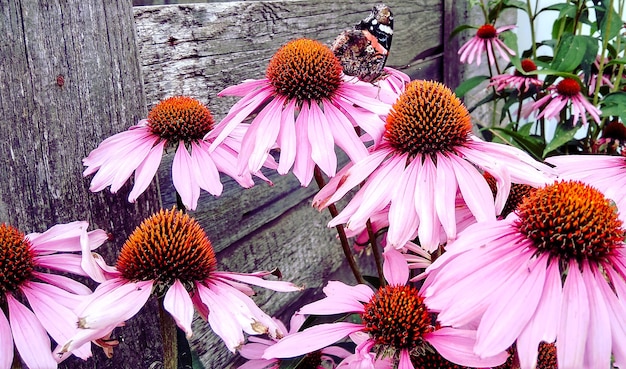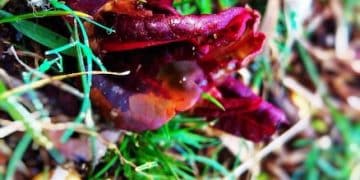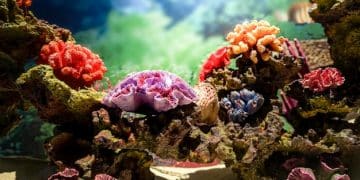Nature’s Pharmacy: Exploring Medicinal Plants Native to the US

Nature’s Pharmacy reveals the potent medicinal properties of native US plants, offering natural remedies for various ailments and highlighting the importance of preserving this valuable botanical heritage.
Explore the fascinating world of Nature’s Pharmacy: Uncovering the Medicinal Properties of Native US Plants, where age-old remedies meet modern science. Discover how these botanical treasures can enhance your well-being and connect you with the healing power of nature.
The Legacy of Native American Herbal Medicine
Native American herbal medicine is a rich and ancient tradition, deeply rooted in the intimate understanding of the local flora. For centuries, indigenous communities across the United States have relied on the healing properties of native plants, carefully preserving this knowledge through generations.
Traditional Uses and Knowledge
The use of herbal remedies was central to the well-being of Native American tribes. Plants were not just medicine; they were also integral to spiritual and cultural practices. Traditional healers, or medicine men and women, possessed extensive knowledge of plant identification, preparation, and application.
Preserving Indigenous Knowledge
Today, there is a growing effort to preserve and revitalize this traditional knowledge. Indigenous communities are working to document traditional practices, ensuring that future generations can continue to benefit from the wisdom of their ancestors. This preservation is vital for maintaining cultural heritage and promoting sustainable use of natural resources.
- Respect Sacredness: Recognize the reverence for nature in indigenous cultures.
- Sustainable Harvesting: Encourage responsible gathering methods that ensure plant survival.
- Community Involvement: Support initiatives led by Native American communities to document and share their knowledge.
The legacy of Native American herbal medicine offers valuable insights into the potential of native US plants. By respecting and preserving this knowledge, we can unlock new avenues for natural healing and promote a deeper connection with the natural world.

Echinacea: The Immune Booster
Echinacea, also known as purple coneflower, is one of the most widely recognized and used medicinal plants in the United States. Its popularity stems from its potent immune-boosting properties and its effectiveness in combating colds and flu.
Historical and Traditional Use of Echinacea
Historically, Echinacea has been used by Native American tribes for centuries to treat a variety of ailments. The Plains Indians, in particular, utilized Echinacea for wound healing, infections, and even snakebites. Its reputation as a versatile remedy led to its widespread adoption in the 19th century by eclectic physicians.
Modern Scientific Research on Echinacea
Modern scientific research has confirmed many of the traditional uses of Echinacea. Studies have shown that Echinacea can stimulate the immune system, reduce the duration and severity of colds, and possess anti-inflammatory properties. While more research is needed, the existing evidence supports its use as a natural remedy for immune support.
- Immune Support: Enhances the activity of immune cells.
- Cold and Flu: Reduces symptom duration and severity.
- Anti-Inflammatory: Helps alleviate inflammation and pain.
Echinacea continues to be a valuable asset in natural medicine, offering a safe and effective way to support the immune system and ward off illness. Its rich history and scientific validation make it a staple in many households across the United States.
Goldenseal: A Natural Antibiotic
Goldenseal (Hydrastis canadensis) is a highly valued medicinal plant native to the woodlands of the eastern United States. Renowned for its potent antibacterial and anti-inflammatory properties, goldenseal has been used for centuries to treat a wide range of ailments.
Traditional Applications of Goldenseal
Historically, goldenseal was a staple in Native American medicine, used by tribes such as the Cherokee and Iroquois for its antiseptic and healing properties. It was frequently used to treat skin infections, digestive issues, and eye inflammations. The plant’s yellow root was also used as a dye.
The Active Compounds in Goldenseal
The medicinal benefits of goldenseal are primarily attributed to its active compounds, particularly berberine. Berberine is known for its antimicrobial, anti-inflammatory, and immune-enhancing effects. These compounds work synergistically to combat infections and promote healing.
Goldenseal offers a natural alternative to conventional antibiotics, with the added benefit of supporting overall immune function. However, due to its potent effects and potential interactions, it should be used with caution and under the guidance of a healthcare professional.
Chamomile: The Soothing Herb
Chamomile is a widely recognized and cherished herb, used for its calming and soothing properties. While not native to the United States, German chamomile (Matricaria chamomilla) has naturalized and is commonly cultivated across the country for its medicinal benefits.

Relaxation and Sleep Aid
One of the primary uses of chamomile is as a natural sleep aid and relaxation agent. Chamomile contains compounds that bind to receptors in the brain, promoting relaxation and reducing anxiety. A warm cup of chamomile tea before bedtime can help ease the mind and improve sleep quality.
Chamomile’s Anti-Inflammatory Properties
In addition to its calming effects, chamomile also possesses anti-inflammatory properties. It can be used to soothe skin irritations, reduce muscle spasms, and alleviate digestive discomfort. Chamomile is often used in creams, lotions, and compresses to treat minor skin conditions and promote healing.
- Promotes Relaxation: Reduces anxiety and stress.
- Aids Sleep: Improves sleep quality and duration.
- Soothes Skin: Alleviates skin irritations and inflammation.
Chamomile is a gentle and versatile herb, making it a popular choice for those seeking natural ways to relax, improve sleep, and soothe minor ailments. Its calming properties and pleasant aroma make it a comforting addition to any wellness routine.
Yarrow: The Wound Healer
Yarrow (Achillea millefolium) is a versatile and resilient plant native to the United States, known for its potent wound-healing and anti-inflammatory properties. This herb has a long history of use in traditional medicine and continues to be valued for its therapeutic benefits.
Traditional Uses of Yarrow
Traditionally, yarrow has been used by various Native American tribes for its ability to stop bleeding, disinfect wounds, and promote healing. It was also used to treat inflammation, digestive issues, and menstrual problems. The plant’s feathery leaves and distinctive scent made it easily identifiable and widely accessible.
Yarrow’s Active Compounds
The therapeutic properties of yarrow are attributed to its active compounds, including achilleine, which helps to stop bleeding, and anti-inflammatory agents that reduce swelling and pain. Yarrow also possesses antimicrobial properties, helping to prevent infection in wounds.
Yarrow remains a valuable herb for natural wound care, offering a safe and effective way to promote healing and prevent infection. Its accessibility and long history of use make it a staple in traditional medicine and a valuable addition to any home herbal remedy kit.
The Importance of Sustainable Harvesting
As interest in native US medicinal plants grows, it is crucial to emphasize the importance of sustainable harvesting practices. Over-harvesting can deplete wild populations, threatening the survival of these valuable plants and disrupting local ecosystems.
Ethical Gathering Practices
Sustainable harvesting involves gathering plants in a way that minimizes impact on the environment and ensures the long-term health of the plant populations. This includes harvesting only what is needed, leaving enough plants to regenerate, and avoiding sensitive or endangered species.
Supporting Conservation Efforts
Supporting conservation efforts is essential for protecting native medicinal plants and their habitats. This includes advocating for responsible land management, supporting organizations that work to preserve biodiversity, and educating others about the importance of sustainable harvesting practices.
- Harvest Responsibly: Only take what you need and leave enough for regeneration.
- Avoid Endangered Species: Do not harvest plants that are rare or threatened.
- Support Local Conservation: Contribute to organizations that protect native plant habitats.
By embracing sustainable harvesting practices and supporting conservation efforts, we can ensure that future generations will continue to benefit from the healing power of native US medicinal plants. Responsible stewardship of these resources is essential for both human health and environmental sustainability.
| Key Point | Brief Description |
|---|---|
| 🌿 Native Heritage | Traditional use of US plants in Native American medicine. |
| 💜 Echinacea Benefits | Immune boosting properties and cold/flu symptom relief. |
| 🌼 Chamomile Uses | Calming and anti-inflammatory benefits. Good for sleep aid. |
| 🌱 Sustainable Harvest | Ensure plants survive by ethical gathering and conservation. |
What are the common native US medicinal plants?
▼
Some common native US medicinal plants include Echinacea, Goldenseal, Chamomile, and Yarrow. These plants have been used for centuries in traditional medicine for their therapeutic properties.
▼
Native Americans used medicinal plants to treat a variety of ailments, including wounds, infections, digestive issues, and pain. The specific uses varied depending on the tribe and the availability of plants in their region.
Echinacea is known for its immune-boosting properties. It has been shown to reduce the duration and severity of colds, stimulate the immune system, and possess anti-inflammatory effects.
What are the sustainable harvesting practices?
▼
Sustainable harvesting practices include only taking what you need, leaving enough plants to regenerate, avoiding endangered species, and supporting local conservation efforts.
Is chamomile native to the United States?
▼
While not originally native, German chamomile has naturalized in the US and is now cultivated for its calming and anti-inflammatory benefits. It’s a common ingredient in teas and topical treatments.
Conclusion
Exploring Nature’s Pharmacy: Uncovering the Medicinal Properties of Native US Plants reveals a wealth of natural remedies that have been used for centuries. By understanding and respecting the traditional knowledge, embracing sustainable harvesting practices, we can harness the healing power of these plants while ensuring their preservation for future generations.





